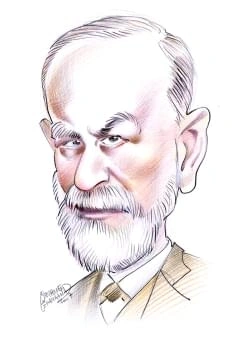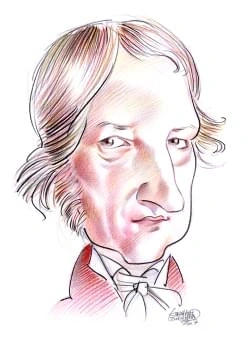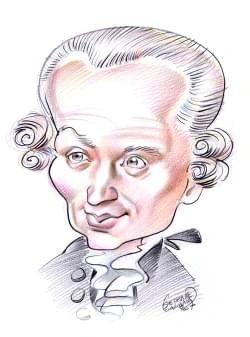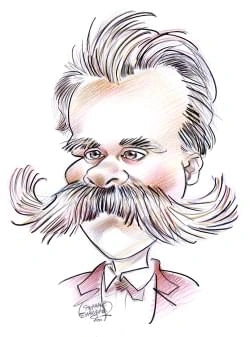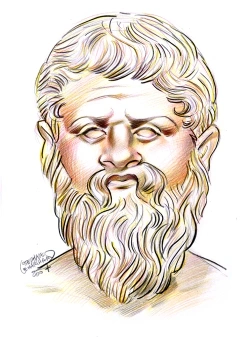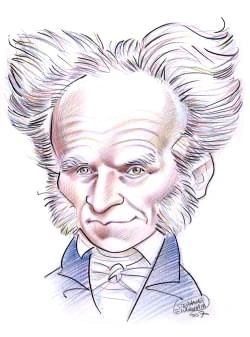199 résultats pour "ground"
-
Zachary Taylor.
army fled back across the Río Grande into Mexico. When Polk got word of the victories, he promoted Taylor to major general. Congress awarded him two gold medals. B1 Battle of Monterrey In September 1846, Taylor began an invasion of northern Mexico. His army of 6000 consisted of regulars and volunteers. On September 21 he attacked the fortifiedcity of Monterrey, which was defended by more than 7000 Mexicans under General Pedro de Ampudia. Taylor divided his army, giving Brigadier General William...
-
Zachary Taylor
army fled back across the Río Grande into Mexico. When Polk got word of the victories, he promoted Taylor to major general. Congress awarded him two gold medals. B1 Battle of Monterrey In September 1846, Taylor began an invasion of northern Mexico. His army of 6000 consisted of regulars and volunteers. On September 21 he attacked the fortifiedcity of Monterrey, which was defended by more than 7000 Mexicans under General Pedro de Ampudia. Taylor divided his army, giving Brigadier General William...
-
Radar.
gathers the weak returning radar signals and converts them into an electric current. Because a radar antenna may both transmit and receive signals, the duplexerdetermines whether the antenna is connected to the receiver or the transmitter. The receiver determines whether the signal should be reported and often does furtheranalysis before sending the results to the display. The display conveys the results to the human operator through a visual display or an audible signal. B1 The Antenna The rec...
-
Helicopter.
naturally flaps down so as to increase lift. Flapping allows the differences in lift caused by uneven rotor tip speed to cancel out, producing a stable ride. Many helicoptersuse mechanical hinges with lubricated bearings, but some use flexible straps made of a composite material in order to reduce the required maintenance. Helicopters require different amounts of lift and thrust at different times during flight, because the aerodynamic forces acting on them change during hovering andacceleration...
-
Iran-Iraq War - History.
The Iranian offensives of 1982 set a pattern that continued for the rest of the war. Exploiting their superiority in numbers, Iran sent its Revolutionary Guard on theattack, supported by regular military forces. Outnumbered Iraqi forces inflicted heavy losses on the Iranians but ultimately fell back. As soon as the initial Iranian thrusthad exhausted itself, however, the Iraqi army exploited Iranian disorganization and lack of equipment to retake much of the lost territory. As the war continued,...
-
Space Exploration - astronomy.
to produce 250,000 newtons (56,000 lb) of thrust. The Germans launched thousands of V-2s carrying explosives against targets in Britain and The Netherlands. Whilethey did not prove to be an effective weapon, V-2s did become the first human-made objects to reach altitudes above 80 km (50 mi)—the height at which outer spaceis considered to begin—before falling back to Earth. The V-2 inaugurated the era of modern rocketry. A2 Early Artificial Satellites During the years following World War II, the...
-
5, 6, 7, 5, 4, 6!
new movie? Iwrote, "What's happened?" andshowed itto ayoung businessman watchingthetelevision, hetook asip of his coffee andsaid, "Nooneknows yet,"hiscoffee haunts me,his"yet" haunts me.Istood there, aperson inacrowd, was Iwatching theimages, orwas something morecomplicated happening?Itried tocount thefloors above where the planes hadhit,the fire had toburn upthrough thebuildings, Iknew thatthose people couldn't besaved, andhow many were onthe planes, andhow many wereonthe street, Ithought andth...
-
Renaissance Art and Architecture
I
INTRODUCTION
Renaissance Composition
During the Renaissance (15th and 16th centuries) artists discovered new ways to help them create more realistic and
compelling images.
with reliefs, had been familiar for centuries. A Early Renaissance Sculpture Ghiberti’s Gates of ParadiseThe Gates of Paradise are bronze doors created by Italian Renaissance sculptor Lorenzo Ghiberti between 1425 and 1452for the east entrance to the baptistery of the Florence Cathedral in Italy. This detail, showing Isaac and Esau, is from oneof the doors' ten panels, each of which illustrates a story from the Bible. Ghiberti endowed the scenes with volume, depth,and movement, and helped initi...
-
-
Richard Nixon.
As President Eisenhower neared the end of his second term, his vice president emerged as his logical successor, and the president endorsed Nixon in March. Nixonreceived an impressive vote in party primaries, and at the Republican National Convention, held in Chicago in July, he received all but ten of the delegates’ votes on thefirst ballot. Nixon chose as his running mate the U.S. ambassador to the United Nations, Henry Cabot Lodge of Massachusetts. An unusual feature of the campaign wasa serie...
-
Richard Nixon
As President Eisenhower neared the end of his second term, his vice president emerged as his logical successor, and the president endorsed Nixon in March. Nixonreceived an impressive vote in party primaries, and at the Republican National Convention, held in Chicago in July, he received all but ten of the delegates’ votes on thefirst ballot. Nixon chose as his running mate the U.S. ambassador to the United Nations, Henry Cabot Lodge of Massachusetts. An unusual feature of the campaign wasa serie...
-
Turtle.
Turtles use their jaws to cut and handle food. Instead of teeth, a turtle’s upper and lower jaws are covered by horny ridges, similar to a bird’s beak. Meat-eating turtlescommonly have knife-sharp ridges for slicing through their prey. Plant-eating turtles often have ridges with serrated edges that help them cut through tough plants.Turtles use their tongues in swallowing food, but unlike many other reptiles, such as chameleons, they cannot stick out their tongues to capture food. C Limb Structu...
-
Turtle - biology.
Turtles use their jaws to cut and handle food. Instead of teeth, a turtle’s upper and lower jaws are covered by horny ridges, similar to a bird’s beak. Meat-eating turtlescommonly have knife-sharp ridges for slicing through their prey. Plant-eating turtles often have ridges with serrated edges that help them cut through tough plants.Turtles use their tongues in swallowing food, but unlike many other reptiles, such as chameleons, they cannot stick out their tongues to capture food. C Limb Structu...
-
Elephant - biology.
B Trunk An elephant's nose and upper lip are combined in a long, limber trunk, an exceptionally supple appendage with an estimated 150,000 muscles. The versatile trunk actslike a hand for grasping low-growing shrubs and other food and placing it into the mouth; an arm for breaking off tree branches; or a snorkel for breathing when theelephant's body is submerged. Elephants also use their trunks to suck up water and squirt it into their mouths for drinking or over their bodies for bathing. Nostr...
-
Jordan (country) - country.
whom belong to the Greek Orthodox Church, make up about 4 percent of the population. Islam is the state religion and Arabic the official language. C Education Jordan has made significant strides in education in recent decades, despite the influx of hundreds of thousands of refugees and the very large share of the nationalbudget assigned to the armed forces. Public education is free and compulsory between the ages of 6 and 15. At the secondary level, about 85 percent of the malechildren and 87 p...
-
Inca Empire.
The Incas’ public works were built through a labor tax known as mit’a. This tax required most people incorporated into the Inca Empire to provide labor for public worksduring certain portions of each year. This labor tax supported large-scale public works that required the marshalling of large labor forces, such as for the building offorts, roads, and bridges, or the mining of metals and gems. It also allowed the emperor to raise large armies to undertake wars of conquest. Road building was impo...
-
Inca Empire - History.
The Incas’ public works were built through a labor tax known as mit’a. This tax required most people incorporated into the Inca Empire to provide labor for public worksduring certain portions of each year. This labor tax supported large-scale public works that required the marshalling of large labor forces, such as for the building offorts, roads, and bridges, or the mining of metals and gems. It also allowed the emperor to raise large armies to undertake wars of conquest. Road building was impo...
-
- Midnighters
-
Martin Van Buren.
political ambitions. The Clintonians cited as one example of Van Buren's unscrupulous methods his support of a convention in 1821 to revise the state's constitution. Van Buren and hisBucktails said they wanted to make the constitution more democratic. The Clintonians retorted that the real aim was to oust them from office. Both sides were right. Therevised constitution introduced a needed extension of voting rights and improved the operation of the state government. However, it also removed many...
-
Martin Van Buren
political ambitions. The Clintonians cited as one example of Van Buren's unscrupulous methods his support of a convention in 1821 to revise the state's constitution. Van Buren and hisBucktails said they wanted to make the constitution more democratic. The Clintonians retorted that the real aim was to oust them from office. Both sides were right. Therevised constitution introduced a needed extension of voting rights and improved the operation of the state government. However, it also removed many...
-
United States House of Representatives.
Because of the high cost of elections and the short two-year term of office, members of the House campaign almost constantly. They spend much of their time raisingcampaign funds, and they frequently return to their districts to keep in touch with voters. Because the elections are so frequent, House members tend to pay closeattention to how their votes in Congress will be seen in the short term. House members tend to come from wealthier family backgrounds than average Americans. Few working class...
-
Native Americans of North America.
addition to smallpox and measles, explorers and colonists brought a host of other diseases: bubonic plague, cholera, typhoid fever, scarlet fever, pleurisy, mumps,diphtheria, pneumonia, whooping cough, malaria, yellow fever, and various sexually transmitted infections. Despite the undisputed devastation wreaked on Indian populations after European contact, native populations showed enormous regional variability in their response todisease exposure. Some peoples survived and, in some cases, even...
-
Native Americans of North America - Canadian History.
addition to smallpox and measles, explorers and colonists brought a host of other diseases: bubonic plague, cholera, typhoid fever, scarlet fever, pleurisy, mumps,diphtheria, pneumonia, whooping cough, malaria, yellow fever, and various sexually transmitted infections. Despite the undisputed devastation wreaked on Indian populations after European contact, native populations showed enormous regional variability in their response todisease exposure. Some peoples survived and, in some cases, even...
-
Mexico City - geography.
The park houses some of Mexico's most important public buildings, including Chapultepec Castle. Construction of the castle began in 1783. Positioned on the park’shighest elevation, the castle functioned as a fortress during colonial times. It once served as the presidential residence and now houses the National Museum of History,which includes murals by 20th-century Mexican painter Juan O'Gorman. Los Pinos, the official residence and working offices of the president, is also on the grounds, buti...
-
Saskatchewan (province) - Geography.
The length of the frost-free season varies within the province. In the southwest, particularly in the valley lands along the South Saskatchewan River, the frost-freeperiod ranges from 150 to 160 days. Regina enjoys about 123 frost-free days, and Saskatoon has about 111. The far north has only from 85 to 95 frost-free days. One important characteristic of Saskatchewan’s climate is the great variability in temperature and precipitation from year to year, which is often critical for agriculture.The...
-
-
Saskatchewan (province) - Canadian History.
The length of the frost-free season varies within the province. In the southwest, particularly in the valley lands along the South Saskatchewan River, the frost-freeperiod ranges from 150 to 160 days. Regina enjoys about 123 frost-free days, and Saskatoon has about 111. The far north has only from 85 to 95 frost-free days. One important characteristic of Saskatchewan’s climate is the great variability in temperature and precipitation from year to year, which is often critical for agriculture.The...
-
New Brunswick - Geography.
Grand Lake, the largest lake in New Brunswick, is in the lowlands, east of Fredericton. Most other lakes are located in the northern and southwestern parts of NewBrunswick. D Climate New Brunswick has a continental climate that is moderated by maritime influences in the coastal areas. As a result, coastal regions are slightly warmer in the winter andslightly cooler in the summer than are interior regions. Annual temperature variations are large, with the January mean usually at least 25 to 28°C...
-
New Brunswick - Canadian History.
Grand Lake, the largest lake in New Brunswick, is in the lowlands, east of Fredericton. Most other lakes are located in the northern and southwestern parts of NewBrunswick. D Climate New Brunswick has a continental climate that is moderated by maritime influences in the coastal areas. As a result, coastal regions are slightly warmer in the winter andslightly cooler in the summer than are interior regions. Annual temperature variations are large, with the January mean usually at least 25 to 28°C...
-
Animal - biology.
Vertebrates are customarily divided into cold-blooded and warm-blooded animals, but these labels are not very precise. Biologists normally use the terms ectoderm and endoderm to describe temperature regulation more accurately. An ectoderm is an animal whose temperature is dictated by its surroundings, while an endoderm is one that keeps its body at a constant warm temperature by generating internal heat. Reptiles, amphibians, and fish are ectoderms. Although they do not maintain a constant wa...
-
Colorado - geography.
Although the rivers of Colorado are navigable only by small boats, they are important as a source of irrigation water for use in Colorado and adjoining states. However,the water level of the rivers fluctuates seasonally and from year to year. The level is generally low in winter and high in spring and summer, during the runoff of meltedsnow from the mountains. Colorado has no large lakes of natural origin, but there are numerous small lakes in the mountains. The largest bodies of water in Colora...
-
Colorado - USA History.
Although the rivers of Colorado are navigable only by small boats, they are important as a source of irrigation water for use in Colorado and adjoining states. However,the water level of the rivers fluctuates seasonally and from year to year. The level is generally low in winter and high in spring and summer, during the runoff of meltedsnow from the mountains. Colorado has no large lakes of natural origin, but there are numerous small lakes in the mountains. The largest bodies of water in Colora...
-
Oklahoma - geography.
portion and the Panhandle are classified as a steppe, where precipitation, typically 250 to 500 mm (10 to 20 in), is the controlling characteristic. January is usually the coldest month with an average of about 3°C (38°F) and extremes from -33°C (-27°F), the lowest ever recorded, to 33°C (92°F). Summer arelong and hot with temperatures in the upper 30°s C (lower 100°s F) common from May until September across the state. The growing season varies from less than 180days in the western Panhandle to...
-
Oklahoma - USA History.
portion and the Panhandle are classified as a steppe, where precipitation, typically 250 to 500 mm (10 to 20 in), is the controlling characteristic. January is usually the coldest month with an average of about 3°C (38°F) and extremes from -33°C (-27°F), the lowest ever recorded, to 33°C (92°F). Summer arelong and hot with temperatures in the upper 30°s C (lower 100°s F) common from May until September across the state. The growing season varies from less than 180days in the western Panhandle to...
-
-
Utah - geography.
Temperatures decrease from the south to the north in the state. In the mountains the average temperature drops about 0.5°C (about 1°F) for every about 300 m(about 1,000 ft) rise in elevation. Average July temperatures range from less than 16°C (60°F) in the mountains to more than 27°C (80°F) in a few locations insouthern Utah. At Salt Lake City average July temperatures range from a low of 18°C (64°F) to a high of 33°C (92°F). There is a great variation between daytime andnighttime temperatures,...
-
Utah - USA History.
Temperatures decrease from the south to the north in the state. In the mountains the average temperature drops about 0.5°C (about 1°F) for every about 300 m(about 1,000 ft) rise in elevation. Average July temperatures range from less than 16°C (60°F) in the mountains to more than 27°C (80°F) in a few locations insouthern Utah. At Salt Lake City average July temperatures range from a low of 18°C (64°F) to a high of 33°C (92°F). There is a great variation between daytime andnighttime temperatures,...
-
Montana - geography.
(191 sq mi), is Montana’s largest lake, and the largest natural freshwater lake in the contiguous states west of the Mississippi River. C Climate Climatic regions in Montana coincide roughly with the two major physiographic regions. In western Montana, as compared with the eastern plains area, winters tend tobe milder while summers are cooler. Precipitation is more evenly distributed throughout the year in the west, and it is cloudier and somewhat more humid in all seasons.In addition, the grow...
-
Montana - USA History.
(191 sq mi), is Montana’s largest lake, and the largest natural freshwater lake in the contiguous states west of the Mississippi River. C Climate Climatic regions in Montana coincide roughly with the two major physiographic regions. In western Montana, as compared with the eastern plains area, winters tend tobe milder while summers are cooler. Precipitation is more evenly distributed throughout the year in the west, and it is cloudier and somewhat more humid in all seasons.In addition, the grow...
-
Vietnam War.
rigged, since about 150,000 more people voted in Saigon than were registered. Diem then deposed Bao Dai, who had been the only other candidate, and declaredSouth Vietnam to be an independent nation called the Republic of Vietnam (RVN), with himself as president and Saigon as its capital. Vietnamese Communists and manynon-Communist Vietnamese nationalists saw the creation of the RVN as an effort by the United States to interfere with the independence promised at Geneva. III THE BEGINNING OF THE...
-
Vietnam War - History.
rigged, since about 150,000 more people voted in Saigon than were registered. Diem then deposed Bao Dai, who had been the only other candidate, and declaredSouth Vietnam to be an independent nation called the Republic of Vietnam (RVN), with himself as president and Saigon as its capital. Vietnamese Communists and manynon-Communist Vietnamese nationalists saw the creation of the RVN as an effort by the United States to interfere with the independence promised at Geneva. III THE BEGINNING OF THE...
-
Vietnam War - U.
rigged, since about 150,000 more people voted in Saigon than were registered. Diem then deposed Bao Dai, who had been the only other candidate, and declaredSouth Vietnam to be an independent nation called the Republic of Vietnam (RVN), with himself as president and Saigon as its capital. Vietnamese Communists and manynon-Communist Vietnamese nationalists saw the creation of the RVN as an effort by the United States to interfere with the independence promised at Geneva. III THE BEGINNING OF THE...
-
Human Evolution.
Strepsirhines are the most primitive types of living primates. The last common ancestors of strepsirhines and other mammals—creatures similar to tree shrews andclassified as Plesiadapiformes—evolved at least 65 million years ago. The earliest primates evolved by about 55 million years ago, and fossil species similar to lemursevolved during the Eocene Epoch (about 55 million to 38 million years ago). Strepsirhines share all of the basic characteristics of primates, although their brains are notpa...
-
-
Human Evolution - biology.
classified as Plesiadapiformes—evolved at least 65 million years ago. The earliest primates evolved by about 55 million years ago, and fossil species similar to lemursevolved during the Eocene Epoch (about 55 million to 38 million years ago). Strepsirhines share all of the basic characteristics of primates, although their brains are notparticularly large or complex and they have a more elaborate and sensitive olfactory system (sense of smell) than do other primates. B Haplorhines B1 Tarsiers T...
-
Idaho - geography.
Idaho-Montana state line in the southern part of the Bitterroot Mountains. Consequently, nearly all the rivers in the state drain toward the Pacific. Most of Idaho lieswithin the drainage basin of the Columbia River system. The Snake River, which is the chief river in southern and central Idaho, follows a crescent-shaped course forabout 790 km (about 490 mi) across southern Idaho. It then swings northward along the Idaho state line and joins the Columbia River in Washington. Major tributariesof...
-
Idaho - USA History.
Idaho-Montana state line in the southern part of the Bitterroot Mountains. Consequently, nearly all the rivers in the state drain toward the Pacific. Most of Idaho lieswithin the drainage basin of the Columbia River system. The Snake River, which is the chief river in southern and central Idaho, follows a crescent-shaped course forabout 790 km (about 490 mi) across southern Idaho. It then swings northward along the Idaho state line and joins the Columbia River in Washington. Major tributariesof...
-
West Virginia - geography.
Forests, mostly of hardwood varieties, cover 79 percent of West Virginia. The principal commercial species are the oak, yellow poplar, maple, birch, beech, black walnut,hickory, and gum. Softwoods include pines and hemlock firs. Flowering trees include the wild crab apple, dogwood, hawthorn, and redbud. Among the many floweringbushes and plants are the rhododendron, which is the state flower, the laurel, blueberry, hepatica, wild geranium, and black-eyed Susan. Insects and disease, mostly introd...
-
West Virginia - USA History.
Forests, mostly of hardwood varieties, cover 79 percent of West Virginia. The principal commercial species are the oak, yellow poplar, maple, birch, beech, black walnut,hickory, and gum. Softwoods include pines and hemlock firs. Flowering trees include the wild crab apple, dogwood, hawthorn, and redbud. Among the many floweringbushes and plants are the rhododendron, which is the state flower, the laurel, blueberry, hepatica, wild geranium, and black-eyed Susan. Insects and disease, mostly introd...
-
Pennsylvania - geography.
B Rivers and Lakes There are three major river basins in Pennsylvania: the Susquehanna, the Ohio, and the Delaware. Together they drain more than 90 percent of Pennsylvania’s landarea. Most of eastern and central Pennsylvania is drained by the Susquehanna and Delaware systems. The western part of the state is drained by the Allegheny andMonongahela rivers, which join at Pittsburgh to form the Ohio. In addition to the three major river basins, short streams flowing into Lake Erie drain the north...
-
Pennsylvania - USA History.
B Rivers and Lakes There are three major river basins in Pennsylvania: the Susquehanna, the Ohio, and the Delaware. Together they drain more than 90 percent of Pennsylvania’s landarea. Most of eastern and central Pennsylvania is drained by the Susquehanna and Delaware systems. The western part of the state is drained by the Allegheny andMonongahela rivers, which join at Pittsburgh to form the Ohio. In addition to the three major river basins, short streams flowing into Lake Erie drain the north...
- The Alchimist
-
Western Philosophy.
the popular belief in personal deities, but he failed to explain the way in which the familiar objects of experience could develop out of elements that are totally differentfrom them. Anaxagoras therefore suggested that all things are composed of very small particles, or “seeds,” which exist in infinite variety. To explain the way in whichthese particles combine to form the objects that constitute the familiar world, Anaxagoras developed a theory of cosmic evolution. He maintained that the activ...
}})
